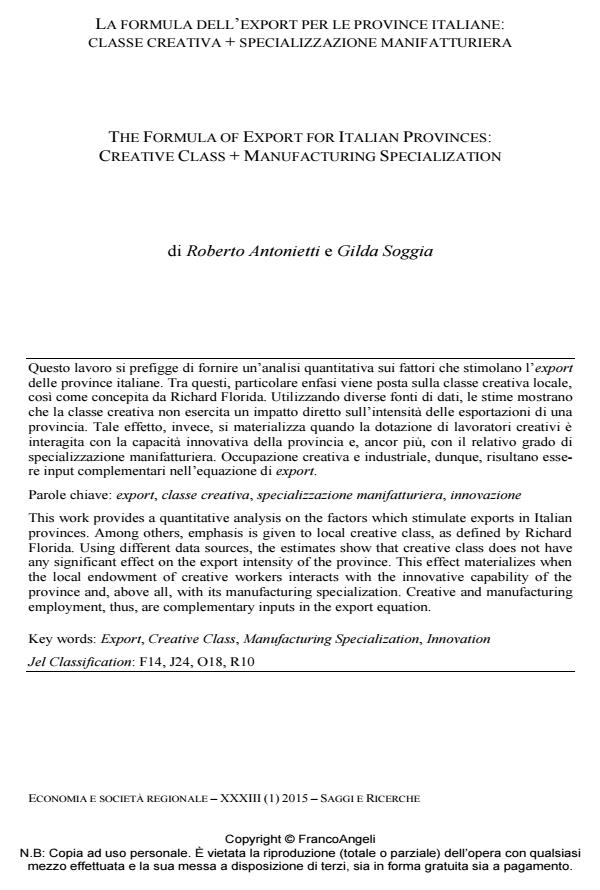La formula dell’export per le province italiane: classe creativa + specializzazione manifatturiera
Titolo Rivista ECONOMIA E SOCIETÀ REGIONALE
Autori/Curatori Roberto Antonietti, Gildo Soggia
Anno di pubblicazione 2015 Fascicolo 2015/1
Lingua Italiano Numero pagine 19 P. 125-143 Dimensione file 342 KB
DOI 10.3280/ES2015-001008
Il DOI è il codice a barre della proprietà intellettuale: per saperne di più
clicca qui
Qui sotto puoi vedere in anteprima la prima pagina di questo articolo.
Se questo articolo ti interessa, lo puoi acquistare (e scaricare in formato pdf) seguendo le facili indicazioni per acquistare il download credit. Acquista Download Credits per scaricare questo Articolo in formato PDF

FrancoAngeli è membro della Publishers International Linking Association, Inc (PILA)associazione indipendente e non profit per facilitare (attraverso i servizi tecnologici implementati da CrossRef.org) l’accesso degli studiosi ai contenuti digitali nelle pubblicazioni professionali e scientifiche
Questo lavoro si prefigge di fornire un’analisi quantitativa sui fattori che stimolano l’export delle province italiane. Tra questi, particolare enfasi viene posta sulla classe creativa locale, così come concepita da Richard Florida. Utilizzando diverse fonti di dati, le stime mostrano che la classe creativa non esercita un impatto diretto sull’intensità delle esportazioni di una provincia. Tale effetto, invece, si materializza quando la dotazione di lavoratori creativi è interagita con la capacità innovativa della provincia e, ancor più, con il relativo grado di specializzazione manifatturiera. Occupazione creativa e industriale, dunque, risultano essere input complementari nell’equazione di export.
Parole chiave:Export, classe creativa, specializzazione manifatturiera, innovazione
Jel codes:F14, J24, O18, R10
- Genialità o esperienza? L'innovatività delle nuove imprese Andrea Furlan, in ECONOMIA E SOCIETÀ REGIONALE 3/2017 pp.68
DOI: 10.3280/ES2016-003005
Roberto Antonietti, Gildo Soggia, La formula dell’export per le province italiane: classe creativa + specializzazione manifatturiera in "ECONOMIA E SOCIETÀ REGIONALE " 1/2015, pp 125-143, DOI: 10.3280/ES2015-001008